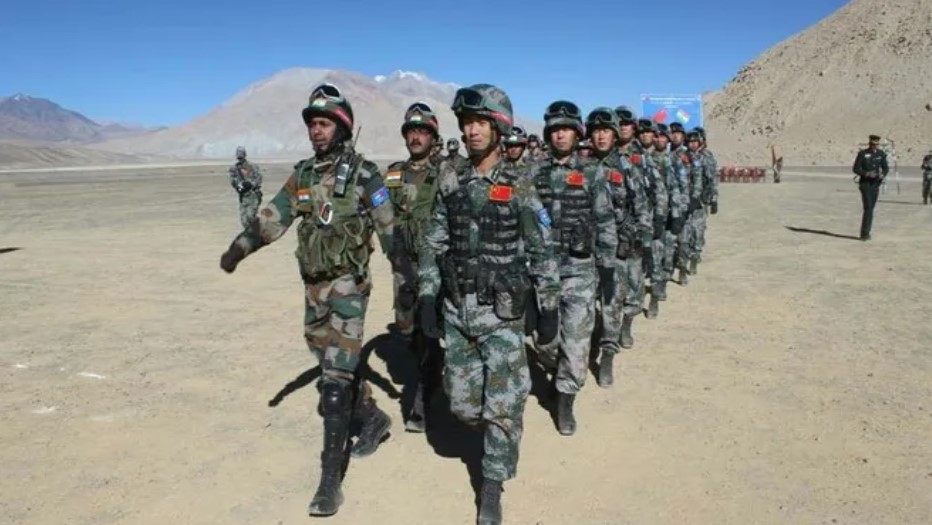
‘Armed Co-Existence’ Redux: Analysing The Cost For China

When the Chinese decided to plan a ‘counterattack’ against India in 1962, the biggest hurdle faced by the PLA was the problem of mobilisation for a “People’s war”. Accustomed to local support in all its mobilisation plans, the campaign in Tibet was a challenge since the Han dominated PLA was in minority in the Tibet Autonomous Region (TAR). Aside from being a minority there were religious and cultural barriers that separated the local Tibetan population from the invading Han. Realising the need to suppress ideological and religious differences with the peoples on their periphery, China has embarked on a very systemic, organised and stringent program to subvert the identity and independence of the minorities in Xinjiang and Tibet. The manifestation of this program has been massive infusion of funds through the United Work Front Department (UWFD) to change the social, linguistic, religious and cultural fabric of Tibetans in TAR while creating a massive infrastructure development plan to assert itself along its borders with India, Nepal & Bhutan along the Himalayan range.
From a military perspective, this has imposed huge costs on China and the PLA. It is no secret that China’s internal security budget is more than its external defence budget. Most of the expenditure on internal security is centred around Xinjiang & Tibet, both of which share borders with India. While China is accused of creating ‘gulags’ in Xinjiang and repeatedly held to account for atrocities committed against the predominantly Muslim Uighurs of Xinjiang, the massive relocation program of Tibetan pastoralists to urban areas, the destruction and subversion of Tibetan monasteries and the population control measures like creation of Xiaogang (well off) villages along the LAC have not been without cost. Large monies have been spent on infrastructure development, ghost towns, roads, power and connectivity to the forward most villages. Tibet and Xinjiang are the most wired places on the planet, while policing and human rights violations continue to draw international condemnation. A façade of peace & tranquillity in all stage managed and orchestrated visits by foreigners and visitors barely conceals the truth behind the massive deployment of organs of internal security of the CCP.
With an aggressive Xi Jinping vowing to make China Great Again, his ambitious Belt & Road Initiative (BRI) plan is to extend China’s economic and military outreach to all corners of the globe. Inherent in this plan is the China Pakistan Economic Corridor (CPEC) which aims to connect the Great Western Development strategy plan to the Arabian sea for trade & transit through the disputed territory of the Indian State of J&K. This has resulted in China becoming an interested party in an otherwise bilateral issue with Pakistan. Other offshoots into the Himalayan neighbourhood, viz, Nepal & Bhutan are aimed at targeting the Indian heartland as well as undermine India’s aspirations to be a regional power and net security provider in the Indian Ocean Region (IOR).
The PLA’s transgression across the LAC in Ladakh in 2020 has been a watershed in the relations between the two Asian giants. The creeping forward strategy, first seen in Daulet Beg Oldi ( DBO) in the Ladakh sector in 2013 , in 2014 in Chumar along the Indus and later in Doklam close to the Bhutan border in 2017, seems to have done little to resolve the long standing border dispute between the two. In fact, the mobilisation of large forces including mechanised units in an eyeball-to-eyeball confrontation in Eastern Ladakh in April 2020 and the bloody duel in June, which resulted in loss of lives of soldiers on both sides aggravated the situation. In the over two years of ‘armed co-existence’ along the LAC , the trust deficit has been raised to a point that India has no appetite for any engagement with China. Jettisoning the ‘business as usual’ thinking, a firm and resolute ‘whole of nation approach’ by India has forced China to seek a rapprochement after heeding the pre-conditions. After the recent withdrawal from PP-15 prior to the SCO meeting at Samarkand, there is a realisation in China of the futility of a binary split of the PLA – managing Taiwan and India simultaneously. Nonetheless, the decision to show aggression in Ladakh displays poor foresight and strategic thinking in the Chinese leadership, as it has unforeseen the costs that this decision has imposed diplomatically, economically and militarily on the Chinese nation as well as the PLA.
In the PLA’s recent publication, Science of Military Strategy-2020, the teaching on management of military crises (like those on the LAC) is fairly clear; the PLA will continue to let the border dispute simmer while not internationalising the issue; restrict it geographically; maintain communication with the adversary ; be open to negotiations and ; exploit any opportunity that facilitates gaining strategic advantage in the crises area. This teaching in the text books of the PLA’s National Defence University suggests that the LAC will continue to remain ‘hot’ and the PLA will attempt to keep the Indian Army on its toes.
The ongoing confrontation between the two nuclear powers, almost in eyeball contact along 3488 kms of the LAC will naturally increase the chances of miscalculation. It is to the credit of both militaries that the standoff in Ladakh did not trigger a shootout between the two. But prolonged armed co-existence, especially in the absence of Confidence Building Measures (CBMs) can quickly lead to escalation unless Rules of Engagement (ROEs) are clearly known and Standard Operating Procedures (SOPs) prepared by both militaries. Parallelly, arrangements must be expedited to stitch together remnants of the CBMs which were unilaterally thrown to the winds by the PLA in April 2020. Indeed, internationally, the disregard for the bilateral CBMs of 1993, 1996, 2005 & 2013 by China is the second such action by China after she scorned the International Court of Justice (ICJ) verdict on the South China sea arbitration case with Philippines. The cost has been the ‘loss of face’ amongst the nations of the world, an essential part of Chinese culture that the Chinese nation has so proudly worn on its sleeve for centuries.
The shift to a more muscular offensive defence strategy by the Indian army is necessitated by the unilateral change in status quo by the PLA. The experience of last four confrontations has made the Indian Army review its strategy in such contestations. Capabilities have been built and technologies developed in quick time to identify, mobilise, confront and contest any future transgressions with capacity to build overwhelming force at point of contact. Further, induction of new weapons like the 155mm Gun/How, extended range Pinaka MBRLs, light tanks, a large fleet of drones, loiter munitions, S-400 AD sys, fifth generation fighter jets and modernisation of Special Forces as well as their ability in executing covert operations has enhanced the Indian Defence forces capabilities by a magnitude. In hindsight, the Chinese leadership must take a hard look at the cost benefit analysis of this policy. Has militarisation of the LAC helped resolve the dispute on the LAC?
This is the third winter for the PLA on the LAC in Ladakh and it has caused a fair number of casualties to the native Han from the plains of China. The massive infrastructure development, rail networks, airfields and communication networks will have a recurring cost to life, limb, equipment and habitat that the PLA will have to contend with, hereon. Maintaining a standing army at one of the highest battlefields in the world is a logisticians nightmare. China’s geography is its biggest challenge. With limited access to the Tibetan Plateau and the vulnerability of these axes to interference and obstruction, the PLA is forced to maintain large stocks and reserves well forward and in large quantities. The degradation of food stocks, ammunition, missiles, heavy machinery like tanks and radars aside due to severe winter will cause strain on the PLA’s military budget. Over time, it will extract a heavy toll on life and limb as well.
Finally, the Binary Stretch. The militarisation of the LAC, at a time when the larger focus is on integration of Taiwan with the mainland, has caused a binary stretch on the PLA. Even Mao exercised utmost caution before 1962 war with India by taking advantage of the Bay of Pigs incident that had diverted the attention of the US and USSR away from the China-India frontier. He did not want to fight on two fronts. In 1971, Kissinger made a fervent appeal to Mao to assist the beleaguered Pakistan Army in East Pakistan by opening the Eastern front. He wisely refused fully comprehending the consequences of the Indo-Soviet Friendship Treaty that was signed just a few months prior to the war. He feared that any action by the PLA to assist Pakistan would open the possibility of a Russian offensive in Northern China, in support of India, causing a binary split in the PLA.
Xi Jinping may have grown in status as equal to Mao, but his policy against a rising and powerful India and its attendant costs on the LAC, suggests he has much to learn to actually be of compare. The policy of “Armed Co-existence’ brings back memories of 1962, only that this time the costs on PLA will be unacceptable to the Chinese people.
Disclaimer
The opinions expressed in this article are the author’s own and do not reflect the views of Chanakya Forum. All information provided in this article including timeliness, completeness, accuracy, suitability or validity of information referenced therein, is the sole responsibility of the author. www.chanakyaforum.com does not assume any responsibility for the same.
Chanakya Forum is now on . Click here to join our channel (@ChanakyaForum) and stay updated with the latest headlines and articles.
Important
We work round the clock to bring you the finest articles and updates from around the world. There is a team that works tirelessly to ensure that you have a seamless reading experience. But all this costs money. Please support us so that we keep doing what we do best. Happy Reading
Support Us





















POST COMMENTS (0)